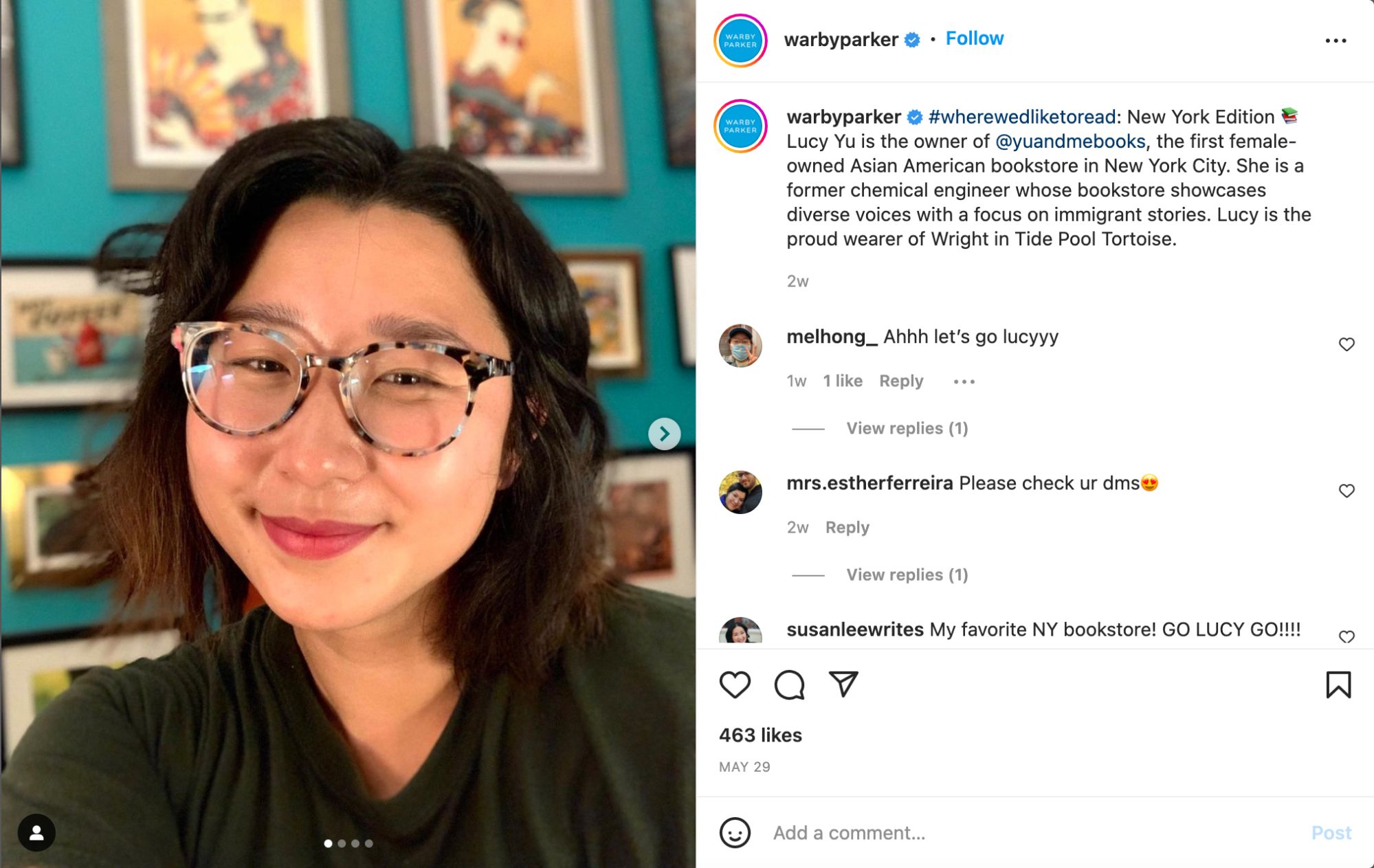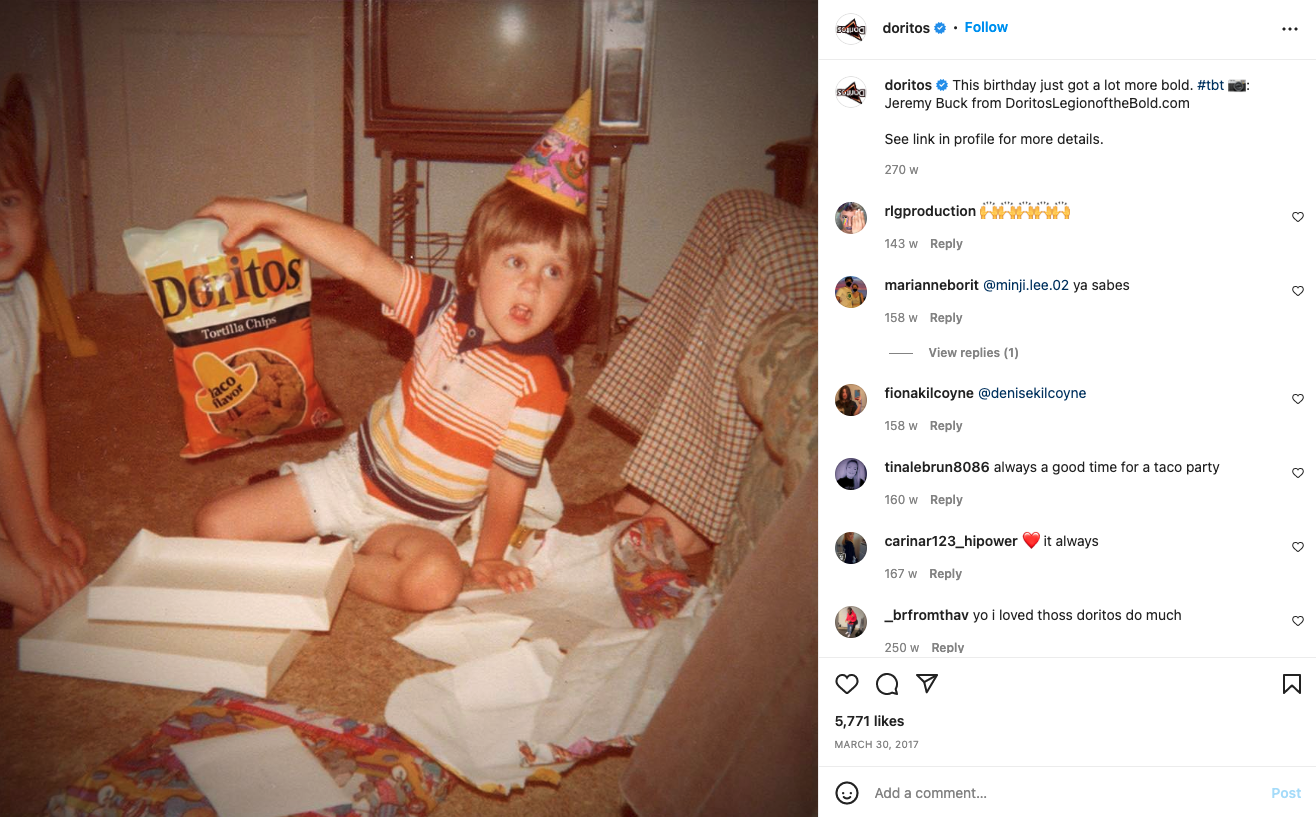
In the previous chapter, you discovered the PESO Model and now know what paid and earned media are. Now let’s look at the other media types: shared and owned.
Shared Media
Most companies find shares obtained on social networks an obscure concept.
Whether it’s an Instagram story, a YouTube video, a Facebook review, or a tweet, UGC is content your users create that mentions your brand or one of your products/services. And this is without any payment or partnership.
Beyond the visibility and image it can bring, UGC is considered 2.4 times more authentic than content created by brands (Stackla study). It inspires and gives confidence. What could be better for your brand?
Furthermore, you can reuse this content by including it in your editorial planning or marketing campaigns.
For example, the optical brand Warby Parker regularly shares photos of its customers proudly wearing their eyewear range:

Or have you heard about the content creation tools developed by Doritos to keep users engaged with their brand and talking online?
The snack-food manufacturer Doritos launched legionofcreators.com, where users can create images and videos using their branded content. They maintain engagement through regular challenges such as the “oddly satisfying challenge” and share their favorites in their stories.

UGC is a major part of their digital activity, including sharing brand-themed makeup selfies, celebrity snaps, and retro throwbacks.
Over to You!

Your turn to take stock of your company’s potential UGC:
List all the platforms and estimate the amount of UGC per platform.
Judge the quality of it (do the photos or videos have good image quality? If the reviews are in text format, are they spelled correctly? Do they respect your brand image? In short, could you reuse some of them?).
Who are the UGC authors (average reach, consumer type)?
What engagement do they generate?
What is the sentiment of the associated comments?
Owned Media
Owned media are the platforms that you own and manage content for.
A good place to start is your website. It is the central element of your online presence.
Therefore, you are free to develop a content marketing strategy that will meet the needs of internet users looking for information. Remember, good quality content implies search engine optimization!
What should you do if outdated or harmful content appears?
Don’t panic! You have the right to delete it.
Start by contacting the site or the person who owns it and asking them (nicely) to remove the content from the original web page. Be patient; it may take a little time.
It is also possible to send a request to Google to remove obsolete content or fill out this form to request the removal of content indexed by Google for privacy protection (for EU citizens).
Despite all of this, if there are still negative results (it happens to the best of us!), you will have to create quality content.
You can set up a flooding strategy, which consists of overwhelming the negative feedback by publishing a large quantity of quality content that is well optimized for search engines.
Let’s Recap!
For your audit, keep a close eye on user-generated content (UGC) on social networks: shared media.
Go through your proprietary platforms (website, pages, social media accounts, etc.): owned media.
Now you’ve got your hands on some data to analyze. The next step will be to write it up in a document, so you can create an action plan that is readable and understandable for your employees.
